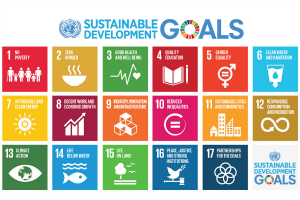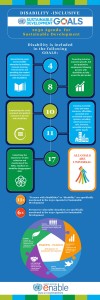Comments due by Mar. 23, 2018
The
extinction of species by human activity continues to accelerate, fast enough to
eliminate more than half of all species by the end of this century. Unless
humanity is suicidal (which, granted, is a possibility), we will solve the
problem of climate change. Yes, the problem is enormous, but we have both the
knowledge and the resources to do this and require only the will.
The
worldwide extinction of species and natural ecosystems, however, is not
reversible. Once species are gone, they’re gone forever. Even if the climate is
stabilized, the extinction of species will remove Earth’s foundational, billion-year-old
environmental support system. A growing number of researchers, myself included,
believe that the only way to reverse the extinction crisis is through a
conservation moonshot: We have to enlarge the area of Earth devoted to the
natural world enough to save the variety of life within it.
The
formula widely agreed upon by conservation scientists is to keep half the land
and half the sea of the planet as wild and protected from human intervention or
activity as possible. This conservation goal did not come out of the blue. Its
conception, called the Half-Earth Project, is an initiative led by a group of
biodiversity and conservation experts (I serve as one of the project’s lead
scientists). It builds on the theory of island biogeography, which I developed
with the mathematician Robert MacArthur in the 1960s.
Island
biogeography takes into account the size of an island and its distance from the
nearest island or mainland ecosystem to predict the number of species living
there; the more isolated an ecosystem, the fewer species it supports. After
much experimentation and a growing understanding of how this theory works, it
is being applied to the planning of conservation areas.
So how
do we know which places require protection under the definition of Half-Earth?
In general, three overlapping criteria have been suggested by scientists. They
are, first, areas judged best in number and rareness of species by experienced
field biologists; second, “hot spots,” localities known to support a large
number of species of a specific favored group such as birds and trees; and
third, broad-brush areas delineated by geography and vegetation, called
ecoregions.
All
three approaches are valuable, but applying them in too much haste can lead to
fatal error. They need an important underlying component to work — a more
thorough record of all of Earth’s existing species. Making decisions about land
protection without this fundamental knowledge would lead to irreversible
mistakes.
The
most striking fact about the living environment may be how little we know about
it. Even the number of living species can be only roughly calculated. A widely
accepted estimate by scientists puts the number at about 10 million. In
contrast, those formally described, classified and given two-part Latinized
names (Homo sapiens for humans, for example) number slightly more than two
million. With only about 20 percent of its species known and 80 percent
undiscovered, it is fair to call Earth a little-known planet.
Paleontologists
estimate that before the global spread of humankind the average rate of species
extinction was one species per million in each one- to 10-million-year
interval. Human activity has driven up the average global rate of extinction to
100 to 1,000 times that baseline rate. What ensues is a tragedy upon a tragedy:
Most species still alive will disappear without ever having been recorded. To
minimize this catastrophe, we must focus on which areas on land and in the sea
collectively harbor the most species.
Building
on new technologies, and on the insight and expertise of organizations and
individuals who have dedicated their lives the environment, the Half-Earth
Project is mapping the fine distribution of species across the globe to identify
the places where we can protect the highest number of species. By determining
which blocks of land and sea we can string together for maximum effect, we have
the opportunity to support the most biodiverse places in the world as well as
the people who call these paradises home. With the biodiversity of our planet
mapped carefully and soon, the bulk of Earth’s species, including humans, can
be saved.
By
necessity, global conservation areas will be chosen for what species they
contain, but in a way that will be supported, and not just tolerated, by the
people living within and around them. Property rights should not be abrogated.
The cultures and economies of indigenous peoples, who are de facto the original
conservationists, should be protected and supported. Community-based
conservation areas and management systems such as the National Natural
Landmarks Program, administered by the National Park Service, could serve as a
model.
To
effectively manage protected habitats, we must also learn more about all the species
of our planet and their interactions within ecosystems. By accelerating the
effort to discover, describe and conduct natural history studies for every one
of the eight million species estimated to exist but still unknown to science,
we can continue to add to and refine the Half-Earth Project map, providing
effective guidance for conservation to achieve our goal.
The
best-explored groups of organisms are the vertebrates (mammals, birds, reptiles,
amphibians, fishes), along with plants, especially trees and shrubs. Being
conspicuous, they are what we familiarly call “wildlife.” A great majority of
other species, however, are by far also the most abundant. I like to call them
“the little things that run the world.” They teem everywhere, in great number
and variety in and on all plants, throughout the soil at our feet and in the
air around us. They are the protists, fungi, insects, crustaceans, spiders,
pauropods, centipedes, mites, nematodes and legions of others whose scientific
names are seldom heard by the bulk of humanity. In the sea and along its shores
swarm organisms of the other living world — marine diatoms, crustaceans,
ascidians, sea hares, priapulids, coral, loriciferans and on through the still
mostly unfilled encyclopedia of life.
Do not
call these organisms “bugs” or “critters.” They too are wildlife. Let us learn
their correct names and care about their safety. Their existence makes possible
our own. We are wholly dependent on them.
With
new information technology and rapid genome mapping now available to us, the
discovery of Earth’s species can now be sped up exponentially. We can use
satellite imagery, species distribution analysis and other novel tools to
create a new understanding of what we must do to care for our planet. But there
is another crucial aspect to this effort: It must be supported by more “boots
on the ground,” a renaissance of species discovery and taxonomy led by field
biologists.
Within
one to three decades, candidate conservation areas can be selected with
confidence by construction of biodiversity inventories that list all of the
species within a given area. The expansion of this scientific activity will
enable global conservation while adding immense amounts of knowledge in biology
not achievable by any other means. By understanding our planet, we have the
opportunity to save it.
As we
focus on climate change, we must also act decisively to protect the living
world while we still have time. It would be humanity’s ultimate achievement.







